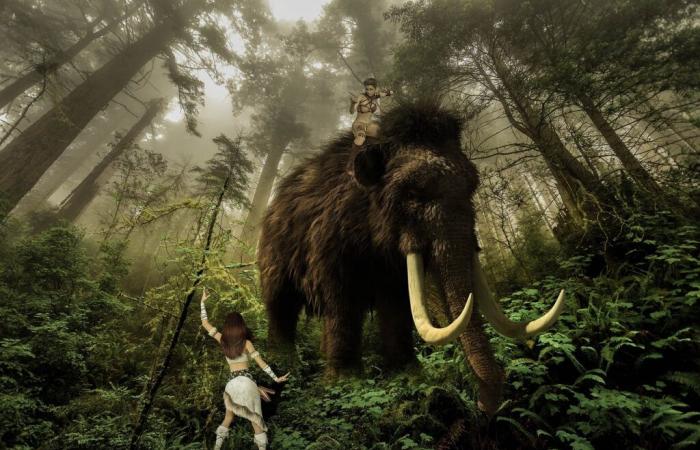Arte presents a captivating documentary by Herbert Oswald, immersing the viewer in the world of the most ambitious scientific projects of our time. Through this film, entitled At the Origins of Wild Lifewe follow the initiatives of researchers engaged in the restoration of extinct or endangered species. The woolly mammoth, which disappeared more than 4,000 years ago, occupies a central place in this scientific exploration, alongside other emblematic species such as the northern white rhino, the Heck’s auroch and the thylacine or Tasmanian tiger. . This documentary reveals the cutting-edge methods used by scientists and asks a fundamental question: how far should science go to right the wrongs of the past?
The resurrection of the mammoth: an unprecedented scientific challenge
One of the most ambitious projects presented in the documentary is that of the resurrection of the woolly mammoth, a species which disappeared at the end of the last ice age. Colossal Biosciences, a biotechnology laboratory based in the United States, is leading this audacious project with the objective of reviving a mammoth by 2028. The technique used is based on genetic manipulation: cells from mammoth tissues, preserved in the frozen soils of Siberia, are combined with oocytes from Asian elephants, a species whose genome is 99.6% compatible with that of the mammoth.
The objective of Colossal Biosciences is to create embryos ex vivo, that is to say in the laboratory, using artificial wombs, in order to avoid the use of surrogate mothers. If this experiment is successful, the first baby mammoth could be born in less than five years, opening a new chapter for animal biotechnology.
Saving the northern white rhino: a race against time
The documentary also highlights a rescue project for the northern white rhino, a species on the brink of extinction. Since the death of the last male in 2018, there are only two females left, a mother and her daughter, living on a reserve in Kenya. To prevent the disappearance of this lineage, researchers from the BioRescue consortium launched an in vitro fertilization project. Oocytes were collected from the two females and fertilized with frozen sperm from males who died in zoos. These embryos will be implanted into surrogate mothers, southern white rhinos, in the hope of maintaining the northern white rhino lineage. This ambitious project is a real race against time to preserve animal biodiversity.
Aurochs and thylacine: a step backwards for the balance of ecosystems
In Germany, a group of biologists has been working since the 1920s to resurrect the aurochs, an ancestor of modern cattle, which disappeared in the 18th century. Their goal is to recreate a modern version of this iconic animal, hoping that it can play a role in restoring European ecosystems. This project is part of a “rewilding” approach, a conservation strategy aimed at reintroducing key species to rebalance natural environments.
On the other side of the globe, in Australia, researchers are working to revive the thylacine, also called the Tasmanian tiger. This large carnivorous marsupial, which became extinct in the 1930s, could play an essential role in the Australian ecosystem. Colossal Biosciences supports this project by providing technologies and funding to accelerate research and the genetic reconstruction of the species.
Science and ethical questions: towards a modern “Pandora’s box”?
These advances, as impressive as they are, raise important ethical and environmental questions. As science ventures into the realm of species resurrection, some voices are being raised to warn of the potential risks. As a biodiversity expert points out in the documentary, it is legitimate to wonder about the unforeseen consequences of these manipulations. Could the resurrection of extinct species disrupt current ecosystems? Could “resurrected” animals really integrate into habitats that evolved in their absence?
The Arte documentary not only presents these scientific projects as technological feats, but also explores the ethical issues they raise. By bringing extinct species back to the forefront, are researchers playing at being “demiurges”, manipulating nature without understanding all the potential repercussions? This questioning of the limits of science is at the heart of the reflections addressed in this documentary.
Photo credit: Pixabay (cc)
[cc] Breizh-info.com2024, dispatches free to copy and distribute subject to mention and link to the original source






